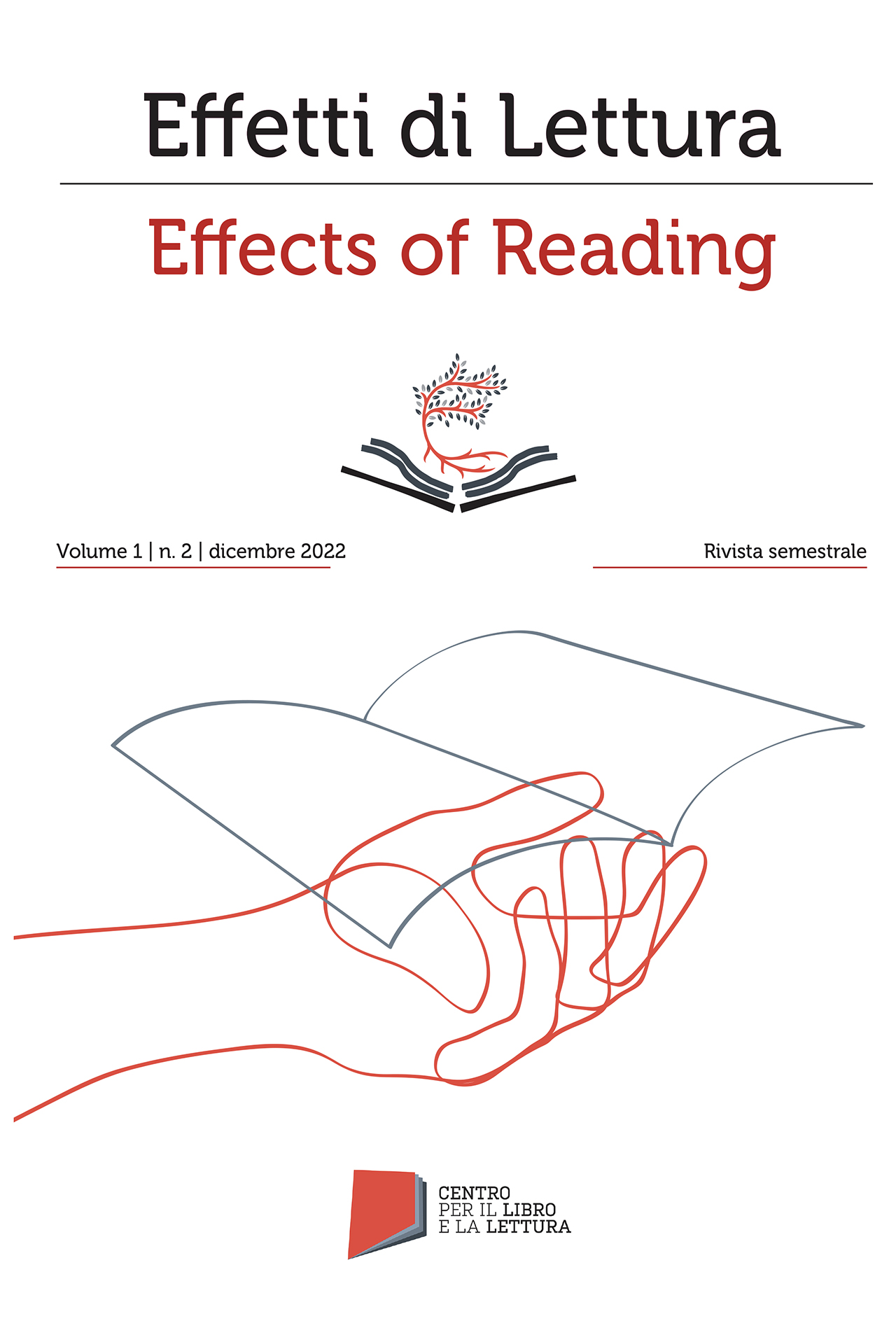Reading: feminine noun?
DOI:
https://doi.org/10.7347/EdL-02-2022-03Keywords:
reading, iconography, imagery, gender gap, reader modelsAbstract
Building on some international research that emphasises the importance of presenting male models of readers to encourage boys to read, this paper is an exploratory study of reader models in painting and literature. Through a web search among sites linking reading and painting, some 250 paintings depicting men and women reading were analysed. The aim was to observe the frequency of female and male presences but above all to analyse the ways in which they are portrayed and any differences. Finally, we chose some famous texts from children's literature containing characters who read and we also examined the ways in which female and male readers are portrayed. Within the limits of the sample, the results show that there is a tendency to represent more women or girls readers. Furthermore, in the representation, the characteristics attributed to male and female reading change: female reading is mainly related to the theme of pleasure and the search for one's own identity, whereas male reading is more related to study and information. In future studies, it would be interesting to understand whether these different representations influence boys' and girls' relationship with reading.
Downloads
References
Agamben, G. (2008). Signatura rerum: sul metodo. Torino: Bollati Boringhieri.
Antoniazzi A. (2009). Allarme rosa. Intervista a Emy Beseghi. LiBeR, 82
Bodei, R. (1979). Comprendere, modificarsi. Modelli e prospettive di razionalità trasformatrice. In Gargani A. (Ed.), Crisi della Ragione. Torino: Einaudi.
Bichi, R. (2002). L’intervista biografica. Milano: Vita e Pensiero.
Bollmann, S. & Heidenreich, E. (2005/2007). Frauen, die lesen, sind gefährlich [Le donne che leggono sono pericolose]. Milano: Rizzoli
Cipolla, C.M. (2002). Istruzione e sviluppo: il declino dell'analfabetismo nel mondo occidentale. Bologna: Il Mulino.
Clark, C. (2009). Why fathers matter to their children literacy. Retrieved November 25, 2019, from: http://www.literacytrust.org.uk .
Clark, C., & Picton, I. (2012). Family matters: the importance of family support for young people's reading. Retrieved January 18, 2019, from: http://www.literacytrust.org.uk .
Clark, C. (2012). Boys' Reading Commission 2012: A Review of Existing Research Conducted to Underpin the Commission. January 20, 2019, from: http://www.literacytrust.org.uk.
EU, High level group of experts on literacy, (2012). Final report EU, Retrieved April 4, 2014 from http://www.ec.europa.eu
Eurostat, (2016). Cultural Statistic, DOI 10.2785/56811
Ferrante, A. (2017). Che cos’è un dispositivo? Milano: Franco Angeli.
Foucault, M. (1975/2011). Sorvegliare e punire: nascita della prigione. Torino: Einaudi.
Ginsburg, C. (1986). Miti, emblemi e spie. Einaudi: Torino.
Klüger, R. (1996). Frauen lesen anders: Essays, Monaco: Dtv.
Istat, (1966). Indagine speciale sulle letture in Italia. Retrieved December 5, 2019 from www.istat.it
Istat, (1989). Indagine multiscopo sulle famiglie. Retrieved December 5, 2019 from www.istat.it
Istat, (2011). Infanzia e vita quotidiana. Retrieved September 10, 2019 from www.istat.it
Istat, (2012). Indagine sull'uso del tempo. Retrieved September 18, 2019 from www.istat.it
Istat, (2019). Produzione e lettura di libri in Italia (anno 2018). Retrieved December 5, 2019 from http
Lyons, M. (1997/2009). I nuovi lettori del XIX secolo: donne, fanciulli, operai. In G. Cavallo & R. Chartier (Eds.), Storia della lettura nel mondo occidentale (pp. 371-410). Milano: Raffaello Cortina.
Marcialis P. (Ed.), (2015). Educare e ricercare. Oltre la fine della pedagogia nella cultura contemporanea. Milano: Franco Angeli.
Massa, R. (1987). Le tecniche e i corpi: verso una scienza dell'educazione. Milano: Unicopli.
Massa, R. (Ed.). (1992). La clinica della formazione: un'esperienza di ricerca. Milano: Franco Angeli.
National Literacy Trust (2012). Boys’ reading commission report. Retrieved January 25, 2019, from http://www.literacytrust.org.uk
OECD, (2015). OECD, (2015), The ABC of gender equality in education: Aptitude, behaviour, confidence, Paris: OECD Publishing.
OCSE, (2010) Pisa 2009 Results: overcoming social background, equity in learning opportunities and outcomes. Retrieved March 6, 2019, from http://www.oecd.org
Orsenigo, J. (2008). Lo spazio paradossale: esercizi di filosofia dell’educazione. Milano: Unicopli.
Schleicher, A. (2019). PISA 2018. Insight and Interpretation. Retrieved from www.oecd.org
UNESCO 2005, (10-12 June, 2003), Aspects of Literacy Assessment: Topics and issues from the UNESCO Expert Meeting. UNESCO. Pag.21. Paris.-Retrieved from: http://unesdoc.unesco.org
Woolf, V. (1929/2013). A Room of One's Own [Una stanza tutta per sé]. Milano: Feltrinelli.
Downloads
Published
How to Cite
Issue
Section
License
Copyright (c) 2023 Effetti di lettura / Effects of reading

This work is licensed under a Creative Commons Attribution-NonCommercial 4.0 International License.








